JOHN COATES
The Hour Between
Dog and Wolf
Risk-Taking, Gut Feelings
and the Biology of Boom and Bust

Dedication Dedication Epigraph PART I : MIND AND BODY IN THE FINANCIAL MARKETS Introduction 1 : The Biology of a Market Bubble 2 : Thinking with Your Body PART II : GUT THINKING 3 : The Speed of Thought 4 : Gut Feelings PART III : SEASONS OF THE MARKET 5 : The Thrill of the Search 6 : The Fuel of Exuberance 7 : Stress Response on Wall Street PART IV : RESILIENCE 8 : Toughness 9 : From Molecule to Market Acknowledgements Notes Further Reading Index Copyright About the Publisher
For Ian, Eamon, Iris and Sarah
Epigraph Epigraph PART I : MIND AND BODY IN THE FINANCIAL MARKETS Introduction 1 : The Biology of a Market Bubble 2 : Thinking with Your Body PART II : GUT THINKING 3 : The Speed of Thought 4 : Gut Feelings PART III : SEASONS OF THE MARKET 5 : The Thrill of the Search 6 : The Fuel of Exuberance 7 : Stress Response on Wall Street PART IV : RESILIENCE 8 : Toughness 9 : From Molecule to Market Acknowledgements Notes Further Reading Index Copyright About the Publisher
[The hour] between dog and wolf, that is, dusk, when the two can’t be distinguished from each other, suggests a lot of other things besides the time of day … The hour in which … every being becomes his own shadow, and thus something other than himself. The hour of metamorphoses, when people half hope, half fear that a dog will become a wolf. The hour that comes down to us from at least as far back as the early Middle Ages, when country people believed that transformation might happen at any moment.
JEAN GENET, PRISONER OF LOVE (1986, TRANS. BARBARA BRAY)
Contents
Cover
Title Page JOHN COATES The Hour Between Dog and Wolf Risk-Taking, Gut Feelings and the Biology of Boom and Bust
Dedication
Epigraph
PART I : MIND AND BODY IN THE FINANCIAL MARKETS
Introduction
1 : The Biology of a Market Bubble
2 : Thinking with Your Body
PART II : GUT THINKING
3 : The Speed of Thought
4 : Gut Feelings
PART III : SEASONS OF THE MARKET
5 : The Thrill of the Search
6 : The Fuel of Exuberance
7 : Stress Response on Wall Street
PART IV : RESILIENCE
8 : Toughness
9 : From Molecule to Market
Acknowledgements
Notes
Further Reading
Index
Copyright
About the Publisher Конец ознакомительного фрагмента. Текст предоставлен ООО «ЛитРес». Прочитайте эту книгу целиком, купив полную легальную версию на ЛитРес. Безопасно оплатить книгу можно банковской картой Visa, MasterCard, Maestro, со счета мобильного телефона, с платежного терминала, в салоне МТС или Связной, через PayPal, WebMoney, Яндекс.Деньги, QIWI Кошелек, бонусными картами или другим удобным Вам способом.
PART I : MIND AND BODY IN THE FINANCIAL MARKETS Introduction 1 : The Biology of a Market Bubble 2 : Thinking with Your Body PART II : GUT THINKING 3 : The Speed of Thought 4 : Gut Feelings PART III : SEASONS OF THE MARKET 5 : The Thrill of the Search 6 : The Fuel of Exuberance 7 : Stress Response on Wall Street PART IV : RESILIENCE 8 : Toughness 9 : From Molecule to Market Acknowledgements Notes Further Reading Index Copyright About the Publisher Конец ознакомительного фрагмента. Текст предоставлен ООО «ЛитРес». Прочитайте эту книгу целиком, купив полную легальную версию на ЛитРес. Безопасно оплатить книгу можно банковской картой Visa, MasterCard, Maestro, со счета мобильного телефона, с платежного терминала, в салоне МТС или Связной, через PayPal, WebMoney, Яндекс.Деньги, QIWI Кошелек, бонусными картами или другим удобным Вам способом.
Introduction 1 : The Biology of a Market Bubble 2 : Thinking with Your Body PART II : GUT THINKING 3 : The Speed of Thought 4 : Gut Feelings PART III : SEASONS OF THE MARKET 5 : The Thrill of the Search 6 : The Fuel of Exuberance 7 : Stress Response on Wall Street PART IV : RESILIENCE 8 : Toughness 9 : From Molecule to Market Acknowledgements Notes Further Reading Index Copyright About the Publisher Конец ознакомительного фрагмента. Текст предоставлен ООО «ЛитРес». Прочитайте эту книгу целиком, купив полную легальную версию на ЛитРес. Безопасно оплатить книгу можно банковской картой Visa, MasterCard, Maestro, со счета мобильного телефона, с платежного терминала, в салоне МТС или Связной, через PayPal, WebMoney, Яндекс.Деньги, QIWI Кошелек, бонусными картами или другим удобным Вам способом.
When you take risks, you are reminded in the most insistent manner that you have a body. For risk by its very nature threatens to hurt you. A driver speeding along a winding road, a surfer riding a monster wave as it crests over a coral reef, a mountain climber continuing his ascent despite an approaching blizzard, a soldier sprinting across no-man’s land – each of these people faces a high chance of injury, even death. And that very possibility sharpens the mind and calls forth an overwhelming biological reaction known as the ‘fight-or-flight’ response. In fact, so sensitive is your body to the taking of risk that you can be caught up in this visceral turmoil when death poses no immediate threat. Anyone who plays a sport or watches from the stands knows that even when it is ‘just a game’, risk engages our entire being. Winston Churchill, a hardened campaigner from the most deadly wars, recognised this power of non-lethal risk to grip us, body and mind. When writing of his early years, he tells of a regimental polo match played in southern India that went to a tie-break in the final chukka: ‘Rarely have I seen such strained faces on both sides,’ he recalls. ‘You would not have thought it was a game at all, but a matter of life and death. Far graver crises cause less keen emotion.’
Similar strong emotions and biological reactions can be triggered by another form of non-lethal risk – financial risk-taking. With the exception of the occasional broker suicide (and these may be more myth than reality), professional traders, asset managers and individuals investing from home rarely face death in their dealings. But the bets they place can threaten their job, house, marriage, reputation and social class. In this way money holds a special significance in our lives. It acts as a powerful token distilling many of the threats and opportunities we have faced over eons of evolutionary time, so making and losing it can activate an ancient and powerful physiological response.
In one important respect, financial risk carries even graver consequences than brief physical risk. A change in income or social rank tends to linger, so when we take risks in the financial markets we carry with us for months, even years after our bets have settled, an inner biological storm. We are not built to handle such long-term disturbances to our biochemistry. Our defence reactions were designed to switch on in an emergency and then switch off after a matter of minutes or hours, a few days at the most. But an above-average win or loss in the markets, or an ongoing series of wins or losses, can change us, Jekyll-and-Hyde-like, beyond all recognition. On a winning streak we can become euphoric, and our appetite for risk expands so much that we turn manic, foolhardy and puffed up with self-importance. On a losing streak we struggle with fear, reliving the bad moments over and over, so that stress hormones linger in our brains, promoting a pathological risk-aversion, even depression, and circulate in our blood, contributing to recurrent viral infections, high blood pressure, abdominal fat build-up and gastric ulcers. Financial risk-taking is as much a biological activity, with as many medical consequences, as facing down a grizzly bear.
Читать дальше
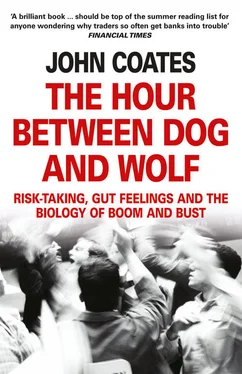

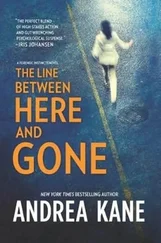
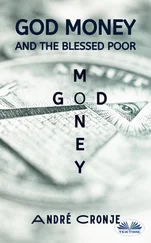



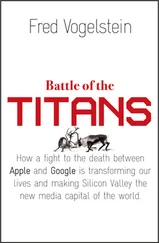
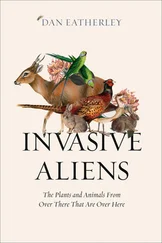



![John Bruce - The Lettsomian Lectures on Diseases and Disorders of the Heart and Arteries in Middle and Advanced Life [1900-1901]](/books/749387/john-bruce-the-lettsomian-lectures-on-diseases-and-disorders-of-the-heart-and-arteries-in-middle-and-advanced-life-1900-1901-thumb.webp)
